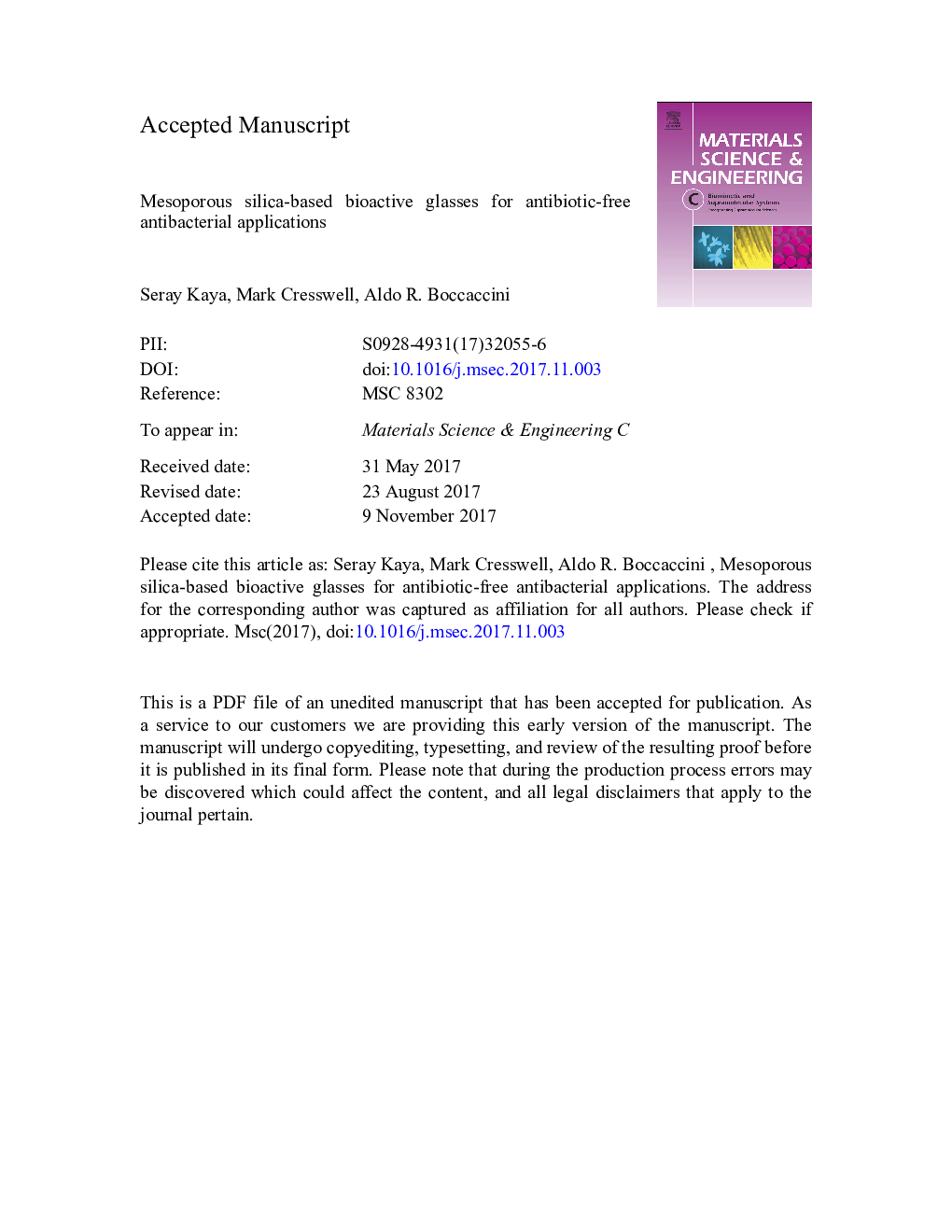| Article ID | Journal | Published Year | Pages | File Type |
|---|---|---|---|---|
| 7866605 | Materials Science and Engineering: C | 2018 | 25 Pages |
Abstract
Bioactive glasses (BGs) are being used in several biomedical applications, one of them being as antibacterial materials. BGs can be produced via melt-quenching technique or sol-gel method. Bactericidal silver-doped sol-gel derived mesoporous silica-based bioactive glasses were reported for the first time in 2000, having the composition 76SiO2-19CaO-2P2O5-3Ag2O (wt%) and a mean pore diameter of 28Â nm. This review paper discusses studies carried out exploring the potential antibacterial applications of drug-free mesoporous silica-based BGs. Bioactive glasses doped with metallic elements such as silver, copper, zinc, cerium and gallium are the point of interest of this review, in which SiO2, SiO2-CaO and SiO2-CaO-P2O5 systems are included as the parent glass compositions. Key findings are that silica-based mesoporous BGs offer a potential alternative to the systemic delivery of antibiotics for prevention against infections. The composition dependent dissolution rate and the concentration of the doped elements affect the antibacterial efficacy of BGs. A balance between antibacterial activity and biocompatibility is required, since a high dose of metallic ion addition can cause cytotoxicity. Typical applications of mesoporous BGs doped with antibacterial ions include bone tissue regeneration, multifunctional ceramic coatings for orthopedic devices and orbital implants, scaffolds with enhanced angiogenesis potential, osteostimulation and antibacterial properties for the treatment of large bone defects as well as in wound healing.
Related Topics
Physical Sciences and Engineering
Materials Science
Biomaterials
Authors
Seray Kaya, Mark Cresswell, Aldo R. Boccaccini,
